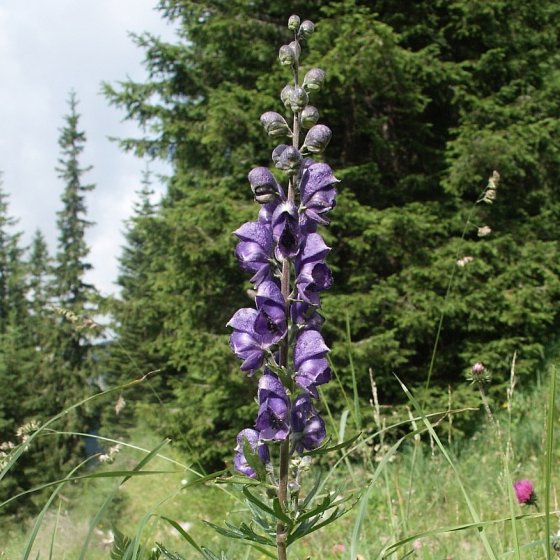Aconitum napellus (the Common Monkshood) was considered to be of therapeutic and toxicological importance.
Its roots have occasionally been mistaken for horseradish.
It has a short underground stem, from which dark-colored tapering roots descend. The crown or upper portion of the root gives rise to new plants.
When touched to one’s lip, the juice of the aconite root produces a feeling of numbness and tingling.
This plant is used as a food plant by some Lepidoptera species including Dot Moth, The Engrailed, Mouse Moth, Wormwood Pug, and Yellow-tail.
Homeopathy Treatment Using Aconite (Aconitum napellus)
Alcohol withdrawal – to cope with fear due to therapy and palpitations
Animal and insect bites – needs to be taken straight away, helps with fright
Anxiety – associated with fear, shock or stress
Bell’s palsy – paralysis caused by exposure to cold air or winds
Bereavement – when death is sudden and the shock severe
Colds – when sudden onset after exposure to draughts or cold winds
Cystitis – reluctance to pass water due to expectation of pain and discomfort
Coughs – dry and suffocating
Ear infections – earache with cutting throbbing pain after exposure to cold air or winds
Eye injuries – irritations from foreign particles, painful, watery and cannot bear light
Fear – following a frightening incident
Grief
Infections – with sudden fever and great thirst after exposure to cold air or winds
Influenza – with sudden fever and great thirst after exposure to cold air or winds
Insomnia – with much twisting and turning
Pain – very intense
Restlessness – in those with vivid imagination
Restless legs syndrome – in those who are anxious
Sore throats – following exposure to cold dry winds
Stress – before surgery
Teething – great pain with fear
Thirst – with a high temperature/fever
Travel sickness – with restlessness and fear

after much exposure to the deadly poison bifenthrin ..aconite napellus has done a remarkable job alleviating nearly all the symptoms mentioned above…
hats of to quinn the homeopathic forerunner .!!!
boiron and highlands forever…
Dear Sir/Madam,
I am Shiva from India. I am suffering with L 4-5 and L 1-2 pain problems.
Due to this I am unable to walk properly too my back ache is killing me like any thing.
I met a doctor in Hyderabad suggested me “Dr.Recheweg” its contents are
Aconitum D4 2 g, Arsenicum album D30 2 g, Colocynthis D4 2 g, Gnaphalium polycephalum D3 2 g, Magnesium phosphoricum D8 2g, 36 Vol. % Alcohol.
Now I am feeling just Ok…….
Pls kindly suggest to overcome from my problem
Thanks & Regards
Shiva.
Take rhustox 6x after every 3 hors 10 drops and also R71 before sleeping and when get up from sleep
If the disease is chronic will take about 10 weeks.
Don’t use egg.rice.boiled rice may b used.
Regards